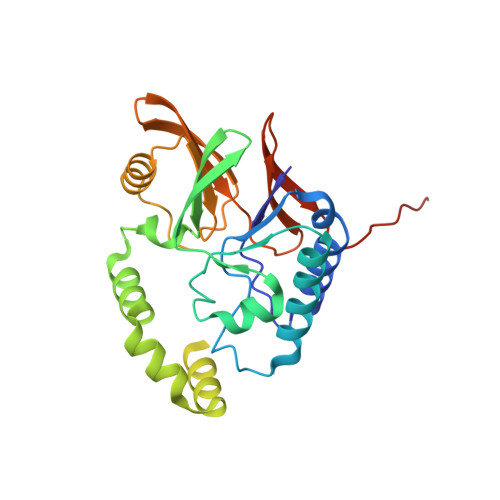Development of LpxH Inhibitors Chelating the Active Site Dimanganese Metal Cluster of LpxH.
Kwak, S.H., Skyler Cochrane, C., Cho, J., Dome, P.A., Ennis, A.F., Kim, J.H., Zhou, P., Hong, J.(2023) ChemMedChem 18: e202300023-e202300023
- PubMed: 37014664
- DOI: https://doi.org/10.1002/cmdc.202300023
- Primary Citation of Related Structures:
7SS6, 7SS7 - PubMed Abstract:
Despite the widespread emergence of multidrug-resistant nosocomial Gram-negative bacterial infections and the major public health threat it brings, no new class of antibiotics for Gram-negative pathogens has been approved over the past five decades. Therefore, there is an urgent medical need for developing effective novel antibiotics against multidrug-resistant Gram-negative pathogens by targeting previously unexploited pathways in these bacteria. To fulfill this crucial need, we have been investigating a series of sulfonyl piperazine compounds targeting LpxH, a dimanganese-containing UDP-2,3-diacylglucosamine hydrolase in the lipid A biosynthetic pathway, as novel antibiotics against clinically important Gram-negative pathogens. Inspired by a detailed structural analysis of our previous LpxH inhibitors in complex with K. pneumoniae LpxH (KpLpxH), here we report the development and structural validation of the first-in-class sulfonyl piperazine LpxH inhibitors, JH-LPH-45 (8) and JH-LPH-50 (13), that achieve chelation of the active site dimanganese cluster of KpLpxH. The chelation of the dimanganese cluster significantly improves the potency of JH-LPH-45 (8) and JH-LPH-50 (13). We expect that further optimization of these proof-of-concept dimanganese-chelating LpxH inhibitors will ultimately lead to the development of more potent LpxH inhibitors for targeting multidrug-resistant Gram-negative pathogens.
Organizational Affiliation:
Department of Chemistry, Duke University, Durham, NC 27708, USA.

















